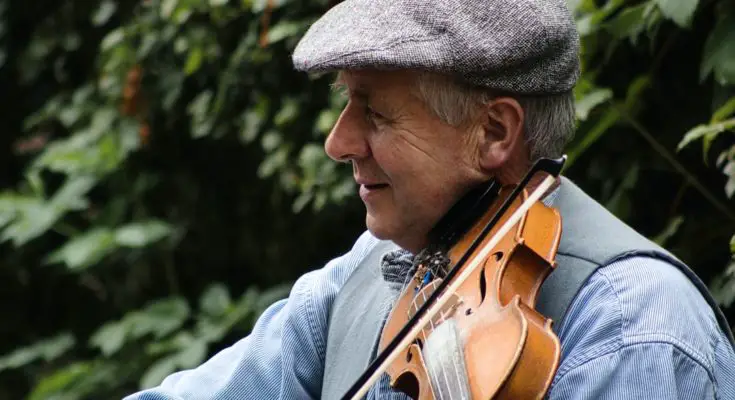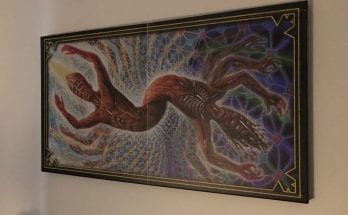Are you a music lover looking to deepen your knowledge of traditional Irish music?
Irish music is a vibrant tradition that has captured the hearts of people around the world. Irish music is a unique and enjoyable genre, from traditional ballads to toe-tapping jigs.
But did you know that Irish music has also influenced many other genres of music, from country to rock? Or that one of the most beloved Irish songs, “Danny Boy,” was written by an Englishman?
Whether you’re a seasoned fan of Irish traditional music or just starting to explore this fascinating genre, there’s always something new to discover.
In this post, we’ll dive into the history and background of Irish music and share some fascinating facts you may not know.
So, let’s get started! Keep reading for four fun facts about Irish music that will pique your interest and deepen your appreciation for this timeless genre.
1. There Are Many Different Styles of Irish Music
Irish music has a rich history and diverse styles, offering something for everyone. The traditional sounds of Irish music are steeped in history and reflect the culture and influences of other countries.
From the frenetic energy of jigs and reels to the haunting beauty of slow airs, here are some of the different styles of Irish music that you might encounter.
Jigs and Reels
Jigs and reels are some of the most popular styles of Irish music. These fast-paced dance tunes are often played on the fiddle, tin whistle, and other traditional instruments.
Jigs are in 6/8 time and often played in sets of three, while reels are in 4/4 time and played in two sets. Many jigs and reels are centuries old and remain popular today.
Slow Airs
Slow airs are a contrasting style to jigs and reels, with haunting and melancholy melodies. These tunes are often played on the uilleann pipes, harp, and other wind instruments. Slow airs are usually played as instrumentals but can also be sung.
Hornpipes
Hornpipes are another style of Irish music that is often played for dancing. They have a distinctive rhythm and are played in 4/4 time. Many hornpipes like “The Harvest Home” and “The Rights of Man” are named after people.
Sean-nós Singing
Sean-nós singing is a unique style of unaccompanied solo singing still practiced in some parts of rural Ireland. Ornamentation, improvisation, and the use of English and Gaelic languages characterize this singing style. The songs are often passed down through generations and reflect Ireland’s rich history and culture.
2. An Englishman Wrote “Danny Boy”
“Danny Boy” is one of the Irish music canon’s most famous and beloved songs. It is often played at funerals, weddings, and other solemn occasions.
An English Melody
The tune, known as “Londonderry Air,” was an old Irish melody collected by Irish musician George Petrie in the early 1800s. Although the melody was popular in Ireland and used in traditional Irish songs, it was only widely known in the country.
Irish Lyrics
The lyrics to “Danny Boy” were written by an English lawyer named Frederic Weatherly in 1910.
Weatherly had written several popular songs but struggled to create new material until he heard “Londonderry Air” from his Irish immigrant sister-in-law. Enchanted by the tune’s beauty, Weatherly wrote new lyrics to match the melody.
Today, “Danny Boy” remains an important and iconic Irish song, a testament to the enduring power of Irish music to touch hearts worldwide.
3. It Has a Lot of Traditional Instruments
Traditional Irish music is rich with traditional instruments, each with its unique sound and place in the genre. While the fiddle is undoubtedly the most well-known instrument in Irish folk music, other instruments contribute to the distinctive sound that makes Irish music so beloved.
One of Irish music’s most significant traditional instruments is the uilleann pipe. This instrument is known for its mellow and haunting sound and is often considered the national instrument of Ireland.
The uilleann pipes have been used for centuries to play traditional Irish music. They are a staple in many Irish musical performances. Their unique sound is an authentic representation of Irish music, and many people seek out performances solely to experience the beauty of the uilleann pipes.
In addition to the uilleann pipes, other traditional instruments are commonly used in Irish folk music. These include the flute, tin whistle, button accordion, bodhrán, and guitar.
4. It Influenced Other Musical Genres
Irish music has significantly impacted various other music genres, including country, bluegrass, rock, punk, and more.
The unique sound of Irish music combines traditional instruments, haunting melodies, and lively rhythms. It has captured the hearts of musicians worldwide, inspiring them to create new and innovative sounds.
Traditional Instruments
Incorporating traditional Irish instruments into other music genres is one of the primary ways that Irish music has influenced other styles.
The fiddle and the tin whistle, both popular in Irish music, have found a place in country and bluegrass music, adding a touch of Celtic flair to these genres.
The button accordion, which Irish musicians have used for centuries, has also found its way into various musical genres.
So has the Irish bouzouki, a mandolin that has become a mainstay of Irish music and now features in folk and acoustic rock music.
Distinctive Rhythms
Moreover, Irish rhythms have also inspired many punk and alternative rock bands. The fast tempos and pounding drums create a high-energy sound that draws on the energy of Celtic punk bands like The Pogues.
New Musical Directions
Finally, the fusion of Irish music with other genres, such as jazz and classical, has created a new and exciting sound that challenges traditional Irish music boundaries.
For instance, The Chieftains, a well-known Irish band, have collaborated with musicians worldwide, blending Irish music with sounds from China, Africa, and the Americas to create a unique and timeless global sound.
Irish Music: A Timeless Tradition
Irish music has been captivating people worldwide, whether you are an old fan or a newcomer. You can always discover something new in the diverse facets of this music genre.
As a social tradition passed down through generations, it has become an integral part of Irish identity, bringing people together. Irish music’s influence on other music genres is a testament to its enduring power.
Why not explore the world of Irish music and experience its magic? From the mournful beauty of “Danny Boy” to the lively rhythm of a ceilidh dance tune, there’s something in Irish music for everyone to enjoy.
To read more about music and its history, check out some related articles. Your journey of music discovery starts here!



